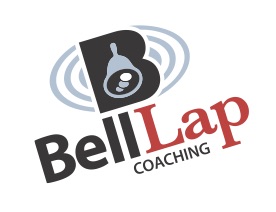Unlock Your Cycling Potential with SMART Goal-Setting
Setting goals is crucial for cyclists aiming to improve their performance on the bike. These goals can be broad (becoming a better cyclist, going faster uphill), or more narrow (getting a PR on a local climb or being on the podium at a regional race).
Reaching your goals will take dedication and focus, and it’s important to create a plan and take deliberate action to ensure steady forward progress. The SMART goal-setting process can help you outline specific steps to complete over a reasonable period of time as you pursue your goals.
SMART goals are: Specific, Measurable, Achievable, Relevant, and Time-bound.
Specific: Define your objectives clearly and precisely.
Example: "I want to improve my climbing ability by completing the climb to Shutesbury Center without stopping."
Measurable: Establish concrete criteria to track your progress.
Example: "I will measure my progress by tracking the time it takes me to reach Shutesbury Center and the power output I maintain during the climb."
Achievable: Set realistic goals that you can reach with effort and commitment.
Example: "I will gradually increase my weekly mileage and incorporate hill repeats into my training to build strength and endurance."
Relevant: Ensure your goals align with your overall cycling aspirations.
Example: "Improving my climbing ability will enhance my performance up the Shutesbury climb, which is a key focus of my cycling season."
Time-bound: Set deadlines to create a sense of urgency and accountability.
Example: "I aim to achieve my goal of conquering the climb to Shutesbury Center within three months, allowing ample time for focused training and progress evaluation."
There are three categories of goals within the SMART framework: process goals, performance goals, and outcome goals.
Process Goals: These focus on the actions you need to take to improve your performance.
Example: "I will maintain a consistent cadence of 90 RPM during hill climbs to optimize my power output and efficiency."
Performance Goals: Aim to achieve specific standards of performance.
Example: "I will climb to Shutesbury Center in under 20-minutes by improving my threshold power and climbing position."
Outcome Goals: Target specific results or achievements.
Example: "I will finish in the top 10 fastest times up the Shutesbury climb by consistently training and honing my climbing skills."
By incorporating a variety of goal types into your training regimen, you'll address different aspects of your cycling performance and maximize your potential on the bike. Remember to apply the SMART framework to each goal to ensure clarity, accountability, and success. And, to really knock it out of the park, make sure to share your goals with friends, family and teammates so they can cheer you on as you work towards your goals. Happy riding!
Explore more:
Listen: Accomplishing Hard Goals & Reverse Goal-setting with Cal Newport
Read: How to Write SMART Goals to Make Them More Achievable
Watch: What to Do & Not Do When Setting Goals with Dr. Emily Balcetis & Dr. Andrew Huberman
Whether your aim is to ride 50 miles or to get fit for an entire season of racing, Bell Lap Coaching’s DIY Training Plans can help you reach your goals! All of our 8-, 12-, or 16-week plans feature detailed bike workouts (with both indoor and outdoor options), as well as follow-along recovery, mobility, and core-strength workouts.
